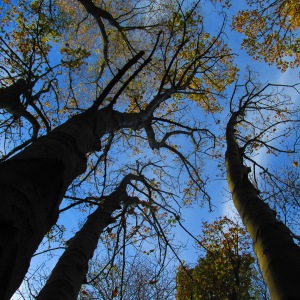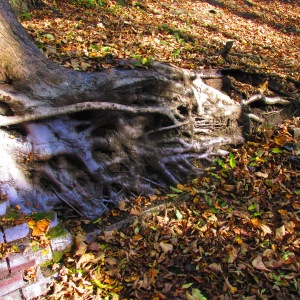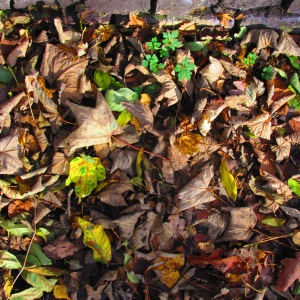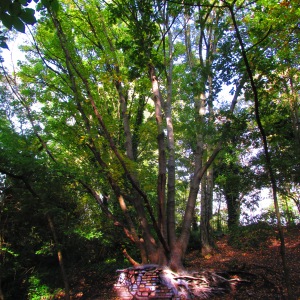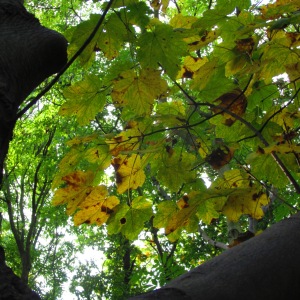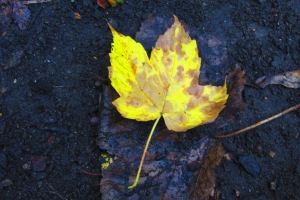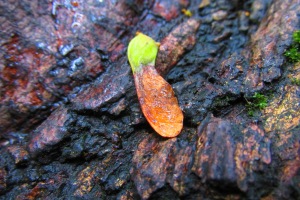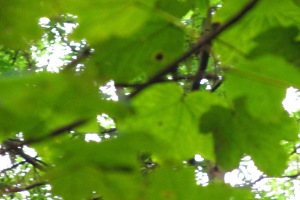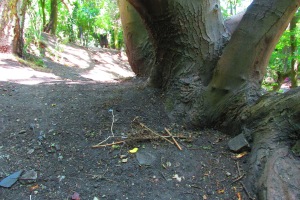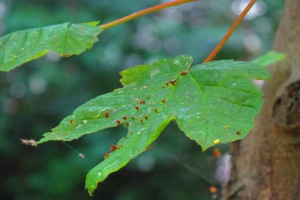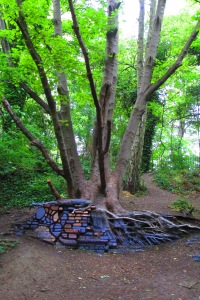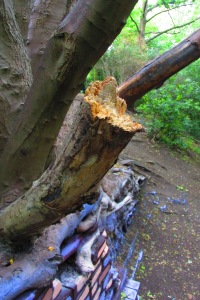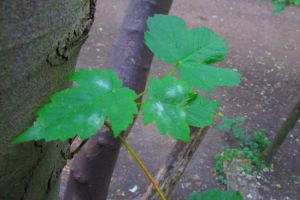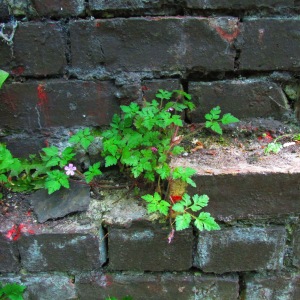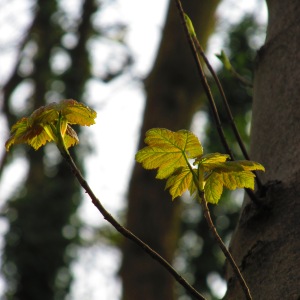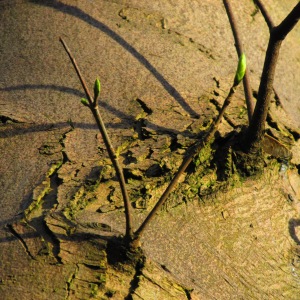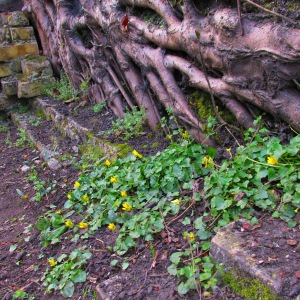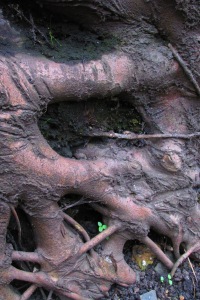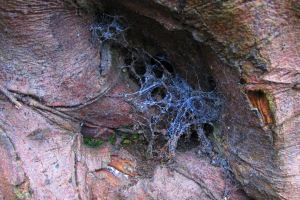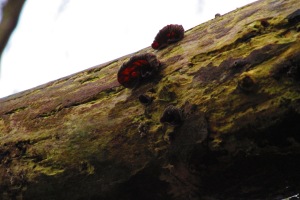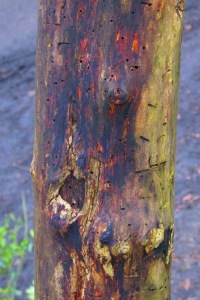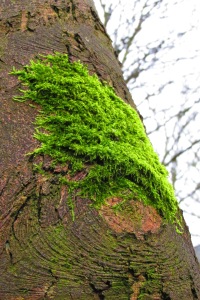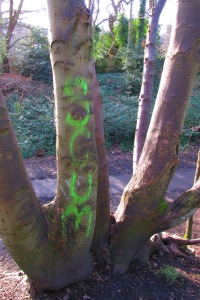There is a spring in Nature’s step: the sun is like a daffodil in the sky (oh yes it is!) and the earth is fuzzing up with weeds. So what’s new with the ‘weed tree’ I’m following?
Well, annoyingly, I’ve chosen a tree whose leaves are all ‘up there’. I was too entranced by the exposed root system to really consider that there were no low-down branches on which I could observe bud burst. Such vernal activity is not going to have the details described in as much depth as I’ve read about in other tree-following posts. Hey ho.. With its multi stems and sparse side growth, this tree resembles a mature coppice tree, one whose cutting cycle has been abandoned so that the shoots have thickened into trunks. Sycamore is ideal for coppicing: the regrowth is rapid and can be harvested again after just eight years. The wood is superb for kitchen utensils as it has a fine grain which is easily cleaned, and it has no odour or toxins that might taint food. Over in Wales, it is favoured for lovespoons.
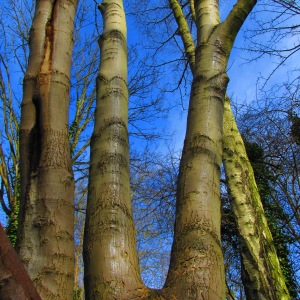
Snail trails on tree trunks. Look closely..
What a roundabout way of saying “I can’t really tell you what the buds are doing”! What I can tell you is that the molluscs are awake and roaming. There are snail trails heading straight up the trunks so far I had to crane my neck to look for their terminals, but there were no ends in sight. I’m guessing these are adventurous snails rather than slugs as I have a vague recollection of reading that snails will travel to greater heights. Whatever they are, they’ve investigated the Jelly Ear fungus.. See the slime silver?
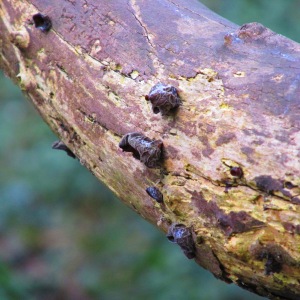
Jelly Ear fungi with snail slime
There is more of the fungi on other parts of the tree which looks fresher..
I had a closer peek at the white-mouldy-looking fungus on the underside of a sideways-leaning trunk. The colours are all 1970s wallpaper!
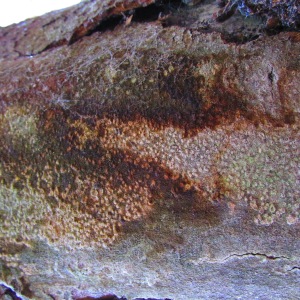
The weeds are becoming more identifiable – at just the leaf-seed stage, I didn’t recognise this as a Speedwell. I’ll have to wait until it flowers before I can figure out what Veronica it is..
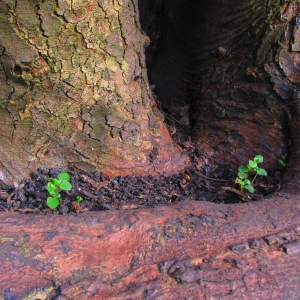 As for Umbellifers.. they’re difficult even when they’re afroth with blossom! Puzzling through my new, super-dooper, more in-depth wildflower book, I’m having a wild guess that this is.. should I embarrass myself by saying? I’m surely wrong! Okay, Burnet Saxifrage.. I reserve the right to change my mind!
As for Umbellifers.. they’re difficult even when they’re afroth with blossom! Puzzling through my new, super-dooper, more in-depth wildflower book, I’m having a wild guess that this is.. should I embarrass myself by saying? I’m surely wrong! Okay, Burnet Saxifrage.. I reserve the right to change my mind!

Unsurprisingly, there are sycamore seedlings sprouting from their ‘helicopters’. This one didn’t fly very far from the tree, having crash-landed in a crook between the stems..
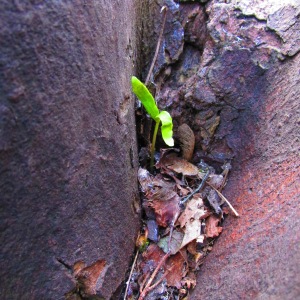
Sycamore seedling
Something I didn’t notice last time was this fragment of glass embedded in the bark – of course I tried to prise it out! It has the shape of a rose thorn..
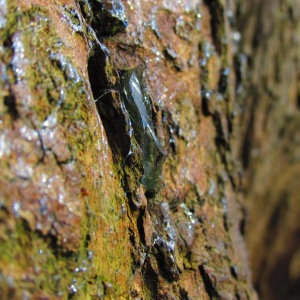
Rose thorn piece of glass
If you haven’t arrived at this post via Loose and Leafy, and are interested in the minutiae of trees, go to the tree following page on said website, and you’ll find lots of us arboreal stalkers!
Until next time…
